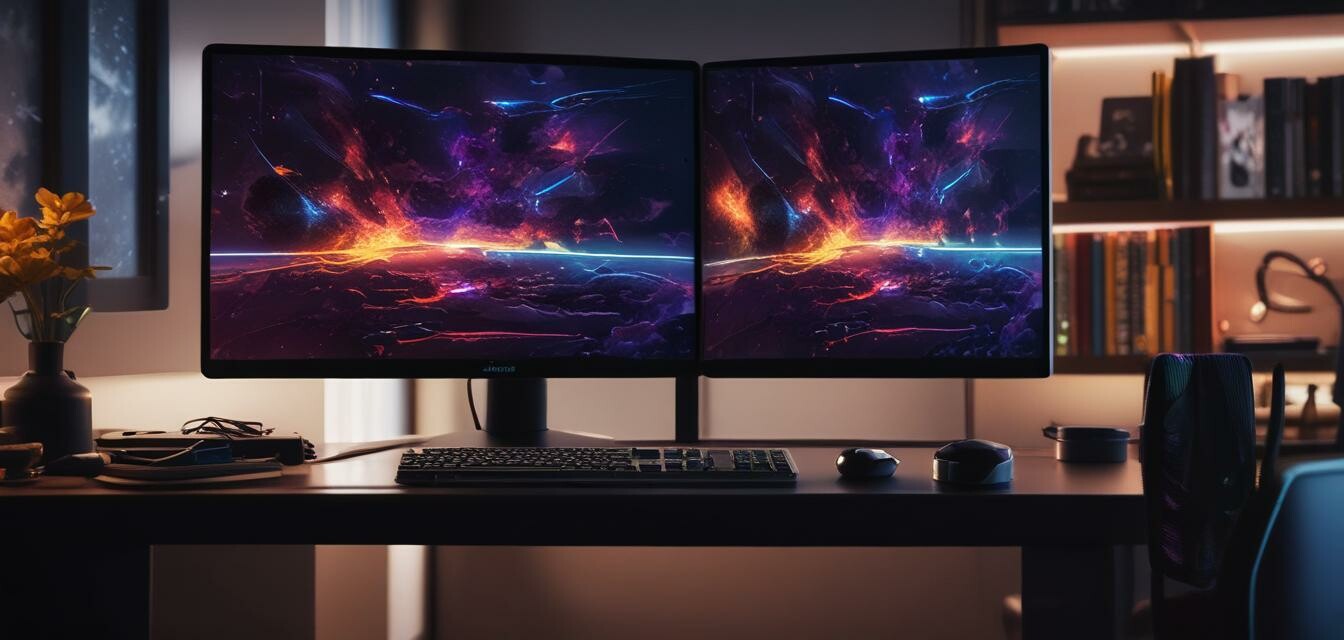
OLED vs. Mini-LED: The Future of Gaming Displays
Key Takeaways
- OLED technology
- Mini-LED technology
- Both technologies cater to different gaming needs and preferences.
- The gaming market is rapidly evolving with these innovative technologies.
- Understanding the differences can help gamers make informed purchasing decisions.
The gaming industry is in a constant state of flux, with new technologies emerging to enhance the gaming experience. Among these innovations, OLED and Mini-LED are at the forefront of discussions regarding the future of gaming displays. This article seeks to analyze the competition between these two display technologies and their potential effects on gaming.
Understanding OLED Technology
Organic Light Emitting Diode (OLED) technology utilizes organic compounds to emit light when an electric current passes through. This results in each pixel generating its own light, allowing for unparalleled contrast ratios and vibrant colors. Here are some core features:
- True blacks: Since OLED pixels can turn off completely, they deliver exceptional black levels.
- Wide color gamut: OLED displays provide a broader range of colors than traditional LCD displays.
- Viewing angles: Colors on OLED monitors remain consistent, even at wider angles.
Understanding Mini-LED Technology
Mini-LED is a newer technology that builds upon traditional LED-backlit LCDs. It utilizes smaller LEDs to provide greater control over backlight dimming zones. Here’s what makes Mini-LED stand out:
- Higher brightness: Mini-LEDs can produce much higher brightness levels, making them suitable for bright environments.
- Improved local dimming: The smaller LEDs allow for finer control over dimming zones, enhancing contrast.
- Cost-effective: Mini-LEDs can often be produced at a lower cost compared to OLED technology.
Comparison of OLED and Mini-LED
| Feature | OLED | Mini-LED |
|---|---|---|
| Black Levels | True blacks | Good, but not perfect |
| Brightness | Moderate | Very high |
| Color Accuracy | Excellent | Good |
| Price | Higher | Lower |
Impact on Gaming Performance
The choice between OLED and Mini-LED can greatly impact gaming performance. For gamers who value:
- Visual Fidelity: OLED’s superior color accuracy and contrast make it ideal for immersive game experiences.
- High Brightness and Dynamic Range: Mini-LED can deliver better performance in brightly lit rooms.
- Budget Considerations: Mini-LED might be the more affordable choice for those on a budget.
Future Trends
As technology evolves, both OLED and Mini-LED are expected to advance. Here's what to anticipate:
Beginners Section
If you’re new to the gaming display world, consider the following tips:
- Assess your gaming environment (dark vs. bright room).
- Determine your budget before diving into purchases.
- Read user reviews to understand real-world performance.
Conclusion
OLED and Mini-LED technologies are reshaping the landscape of gaming displays. Each offers unique advantages that cater to different types of gamers. Whether you prioritize vibrant colors and dark scenes or high brightness and cost-effectiveness, understanding both can help you make an informed decision. As the industry evolves, the competition between these technologies will likely lead to even better gaming experiences.
Pros of OLED
- Incredible color accuracy.
- Unmatched contrast levels.
- Wide viewing angles.
Cons of OLED
- Higher price point.
- Potential burn-in issues.
- Moderate brightness in some models.
Pros of Mini-LED
- Higher brightness capability.
- More affordable than OLED.
- Improved local dimming features.
Cons of Mini-LED
- Color accuracy may not be as high as OLED.
- Blacks may appear grayish in some scenes.
- Viewing angles can limit performance.
Explore more about the latest developments in gaming display technologies in our News and Trends section. For insights on specific product categories, check out our 4K OLED Gaming Monitors or G-Sync & FreeSync OLED Monitors.